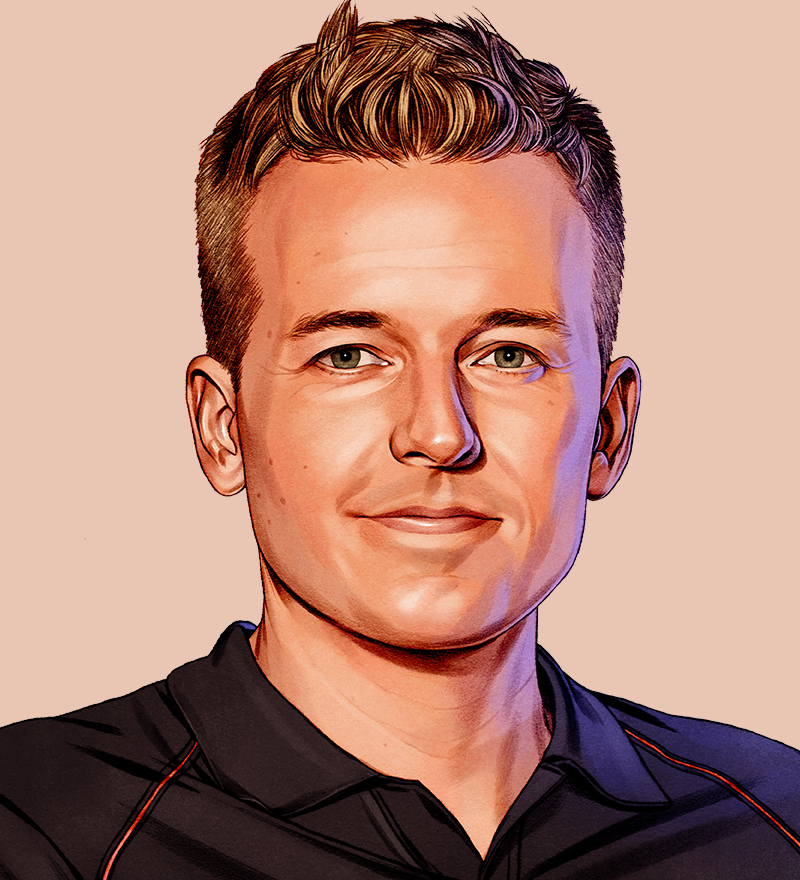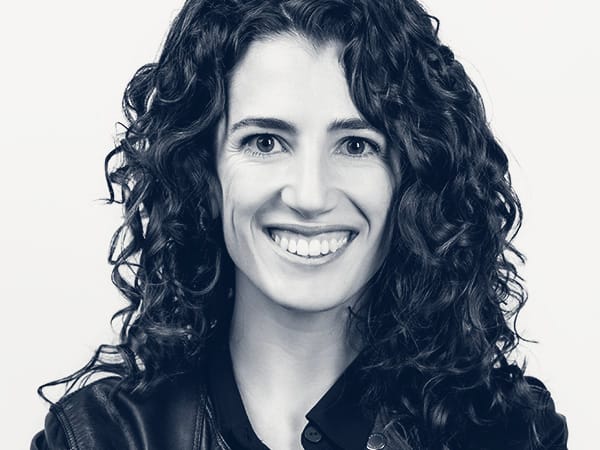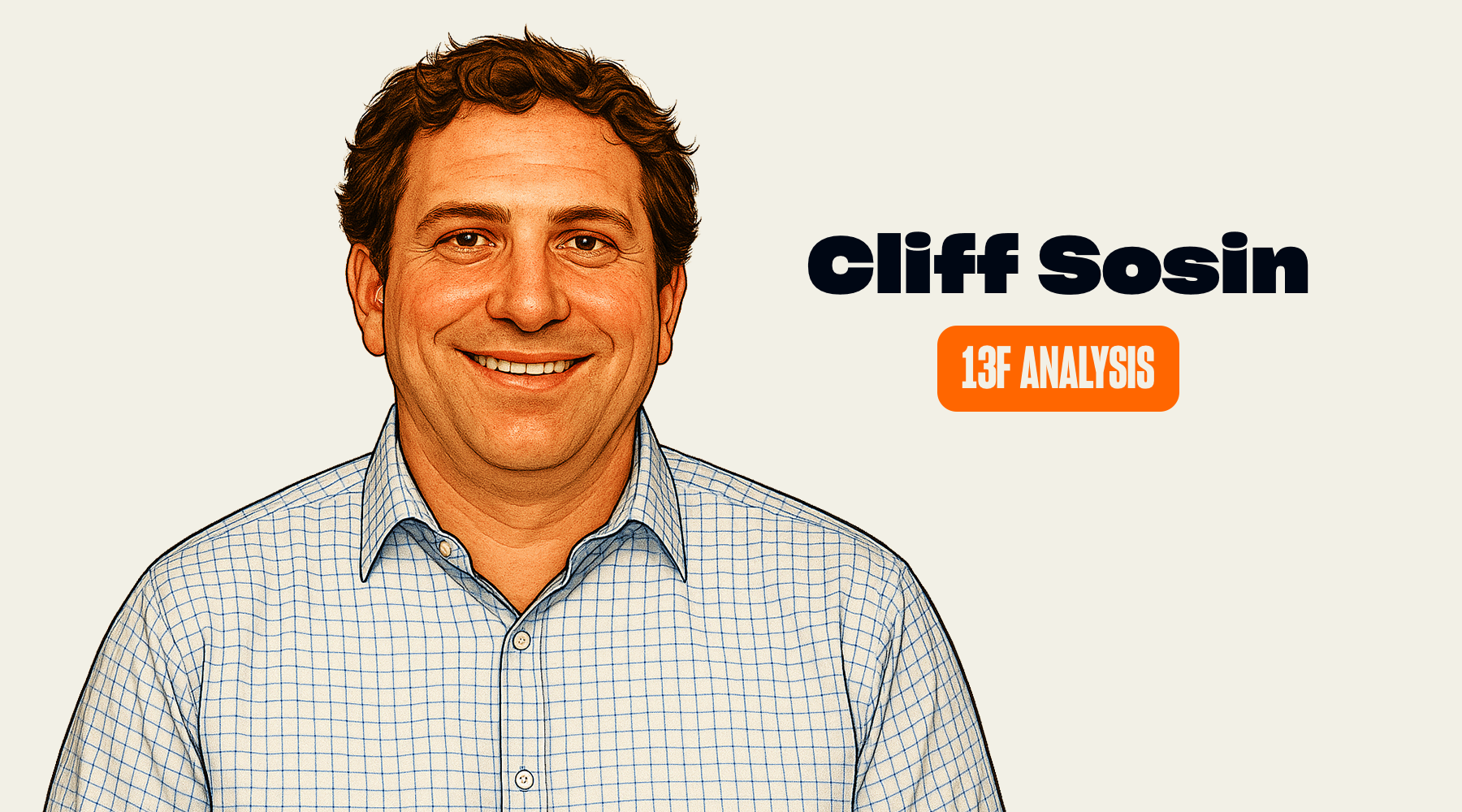Addie Lerner (@addielerner) is Founder and Managing Partner of Avid Ventures, an early stage venture capital firm investing in exceptional founders building transformative fintech, consumer internet, and software companies. Prior to starting Avid, Addie worked as an investor at General Catalyst, General Atlantic and Goldman Sachs. She was named one of NYC Fintech Women’s “50 Inspiring Fintech Females” in 2020 and was featured in the 2019 Forbes “30 Under 30” Venture Capital list.
Chapters
- Addie’s background with Goldman Sachs, General Atlantic, and General Catalyst
- Investing in international founders
- Fighting imposter syndrome
- The Avid Ventures investment framework
- De-risking opportunities
- Seeing both the upsides and downsides of opportunities
- The future of fintech
Key Takeaway
We loved Addie’s thoughts on balancing the upsides and downsides of opportunities:
“You really have to be a little bit crazy to believe the teeny tiny upside percentage potential; real enough that you can go make a bet to try to make it happen, but then you also have to be realistic. I think about the downside. And when you map out the downside, it often turns out it's not as bad as your brain is really telling you.”
“You also have to be careful, because I often can end up making the upside case of a scenario my target case. And once you're underwriting that the teeny tiny upside probability is what you're striving to, you're literally just setting an expectation that you're, probability-wise, not going to hit.”
“I think this whole job is such a privilege. When you zoom out, you get to work with and spend time with the smartest people in our industry—in the world—on a daily basis. You get to explore brand new ideas and industries.”
Transcript
Daniel Scrivner:
Addie, I am so excited to have you on Outlier Academy. Thank you so much for the time and welcome to the show.
Addie Lerner:
Thank you, Daniel. I'm so excited to be here.
Daniel Scrivner:
I wanted to start, for anyone that's not familiar with you and not familiar with your background, your background is super fascinating. That you've worked at a bunch of different funds before launching your own fund. Can you just, I guess, give us a little kind of thumbnail sketch of your background and then we'll jump into Avid really deeply.
Addie Lerner:
Happy to. Yes, even before I started my slew of firms that all start with a G, I actually started out as a international policy major and Arabic student in college. It was a bit of a 180 sort of getting into investing and venture. But I was at Princeton in what is now known as the Princeton School of Public Policy, and really loved the global element of studying international policy and finding solutions to problems. Which I actually saw a lot of parallels in investing, although the ability to do it in a private market scenario, which was a lot more effectual, which I also appreciated.
Daniel Scrivner:
Was there something that tipped the scale for you deciding to just go into investing?
Addie Lerner:
It was two things. It was one, actually getting quite disillusioned with the way that policy gets created and the sausage is made in D.C. and at the state department. Writing my senior thesis on what role the Arab Gulf states could play in an Arab Israeli peace process. I spoke to a lot of folks who've just been banging their head against the wall on these issues for a very long time. Just understanding the roadblocks within government itself was that disillusionment. Then the excitement of getting into investing, which was a totally new world for me. I was learning what EBITDA was my junior internship summer. It was just such a steep learning curve and I loved how much responsibility junior folks could get and how you spent the entire time, as an investor, really being creative. Either searching for new ideas, i.e. new companies, or really doing your best to be helpful to your existing companies and create value. It was that ability to create value quickly and see the ROI on that immediately, or not sometimes immediately, was incredibly compelling.
Daniel Scrivner:
Sorry for interrupting you there. Sorry, go ahead and flush out the rest of your background.
Addie Lerner:
Well, the rest of it is fairly straight forward. I did end up at Goldman Sachs in their Special Situations Group. I was investing the firm's balance sheet capital into private tech companies, generally software businesses, some healthcare services businesses. Really loved investing, did not love waiting three weeks to sign an NDA. Moved on from Goldman to work at General Atlantic, where I was doing pure play growth stage investing. Working with Anton Levy in the internet and technology group. That's where I really learned how to be a growth investor. Again, tying it back to my undergrad studies, I loved the global nature of the firm and actually got to spend a year in GA's London office. Spending time with emerging growth companies throughout Europe and Israel, and really built out a strong network there. I kept getting drawn to these very emerging growth companies.
Addie Lerner:
When I ultimately left General Atlantic, I moved to General Catalyst to focus on seed and Series A investments in companies in New York. Then actually still spending time at the Series B in later stage in Europe and Israel. I worked really closely with my partner, Adam Valkin, and we co-lead the Series B of Rapyd and invested in Monzo and Chief technology. That's actually where I started spending a lot of time in Fintech. It was definitely an evolution of a sort of big firm to smaller firm, later stage to earlier stage, and then just dipping my toes into a lot of different industries.
Daniel Scrivner:
Yeah. It sounds like an incredible setup to you being pretty well prepared to be able to launch your own firm. We'll go on to that and I've got a bunch of questions there in just a second. But one thing I'm curious on is, I think everyone's somewhat familiar obviously with the startup ecosystem and how things work and how things kind of play out here in the US. You've seen that in the UK as well as in Israel and in Europe. Any, I guess, thoughts, for someone that's not familiar with it, anything that stands out to you or is worth sharing from that experience?
Addie Lerner:
I think folks, especially US centric folks, consistently underestimate international founders, and I think especially European founders. I actually remember when I was at one General Atlantic annual meeting, gosh, this must've been in 2015, I think. I just remember a presentation on sort of the economic stagnation of Europe and why there would be very little innovation coming out of Europe in the next decade. First of all, all of our European colleagues who were there were sitting around looking at each other, like, "Did this really just happen at the meeting of a global firm?" But I think what's been really exciting is just how quickly European founders and entrepreneurs have sort of proven that pessimism wrong. So many of the unicorns that we've seen, especially in Fintech, but across industries that have emerged in the last couple of years, especially the last year have been from Europe. I think that speaks to what a number of folks have called the globalization of venture. Especially accelerated by COVID, the fact that investors can invest in anyone over Zoom, it really reduces the geographic boundaries.
Daniel Scrivner:
Yeah. Just building off on that point, I mean, I'm not surprised to hear you say that US centric people kind of underestimate European founders because I think that's true in public markets and in private markets. US investors typically aren't invested enough in China, they don't have exposure to Israel, they don't have exposure to Europe. Hopefully that directionally gets fixed over time.
Addie Lerner:
I hope so as well. We're hoping to take advantage of the little bit of arbitrage that I think still exists there in a lot of our investments. In the portfolio today, we have 14 investments so far. I'd say just under half of them are New York based founders and then the rest are everywhere else. I think the last four investments we've made have actually been European founders.
Daniel Scrivner:
Nice. You're taking advantage of that opportunity. I want to go now to talking about launching your firm Avid. I just wanted to start it off with, obviously you're now at scale, just to, I guess, give the kind of current recap. You're now somewhat at scale. You've got 14 different investments. You've deployed quite a lot of capital. I'm sure you've seen a lot already. But what was it like, take us back to kinds of the early days. I'm curious to know a couple of things. I think one is, was there a unique insight that you had that made it so you had to go launch this firm, and what was that kind of impetus to go and do that?
Addie Lerner:
There was definitely a bit of a push and a pull. After, at that point, 8 years of investing in growth and venture companies, I certainly was not sitting there saying, "You know what, this is going to be the year I'm going to start my own venture firm." That was sort of a next decade plus kind of dream. There were two things that I think really pushed me to go take the leap and start Avid now. The first was that I had an investor, a long-term partner and backer who I had started to get to know over the prior year had become a mentor to me. As we talked about my career and how I wanted that to develop and what I was uniquely good at, and the insight I had about myself as a growth investor who loved early stage investing, we sort of collaboratively explored this idea of, well, what if I did start my own fund? What if this investor and backer actually seeded me to go do that? It was having that encouragement and that push from someone who believed in me at the time.
Addie Lerner:
Probably a little bit more than I believed in myself in my ability to go do it. In particular, I had a very linear way of thinking about my career. I've gone from brand to brand, from great exit opportunity spot to another, and hadn't really thought about taking this kind of risk where it wasn't a sort of, okay, if it doesn't work out, I'll move one step forward. This was a sort of, I'll either leap forward or fall flat on my face. A big part of the experience of deciding to start Avid was coming to grips with my personal risk tolerance and ability or really excitement to go do something like this. Then the second insight, just as I sort of alluded to before is, it was realizing what I'm really good at as an investor. I'm really good at two things. One is just very quickly developing a rapport with founders, who I like and where it's mutual. It doesn't always happen. But when it clicks, it clicks really fast. I can build trust and be really, I think, helpful pretty quickly.
Addie Lerner:
The second element is, as a growth investor, I have this sort of financial modeling analysis skill set that's actually quite unique among early stage investors. It's actually a skillset a lot of founders don't think they really need until they're a growth company. But by introducing it earlier, I have found so many founders just gobble it up and are really excited to have that hands-on strategic financial advice sooner.
Daniel Scrivner:
Yeah. Which is often promised, and it sounds like you can actually deliver that at that scale.
Addie Lerner:
It's a critical piece of it.
Daniel Scrivner:
Which is incredible.
Addie Lerner:
Yeah. Delivering and hopefully overdelivering on that promise.
Daniel Scrivner:
We'll talk more about that in just a second. I have one question on that. I love that framing of a push and a pull and having someone that believed in you helping you to kind of believe in yourself enough to go and take this kind of leap of faith. Which is hilarious because it's very similar to obviously what founders go through every time they have to found a business. But I'm curious on that, you have that experience, you maybe doubt a little bit of your abilities or you have that imposter syndrome. You end up overcoming that and obviously launching this firm and having a lot of success with it. What have you learned from that experience that you would tell somebody who may be as stuck in imposter syndrome mode about launching their own firm or taking that leap?
Addie Lerner:
Yeah. I have a lot of thoughts on this. I will advise and have advised folks to really push their own limits of what they think is possible in terms of the risk they can take. If they're thinking if they should do it, they should just go do it and figure it out. That said, for someone who's as sort of analytical as I am, I really, for every decision, whether it's in investment or a career decision, I really have to look at the scenario of outcomes. For me, it's getting excited about what the upside is if it can work. As an early stage investor or someone who goes to take this risk, you really have to be a little bit crazy to sort of believe the teeny tiny upside percentage potential is real enough that you can go make a bet to try to make it happen. But then you also have to be realistic, I think, about the downside. When you map out the downside, it often turns out it's not as bad as your brain or what my coach and I call our saboteurs are really telling us.
Addie Lerner:
To be just actually super analytical about saying, "What's the worst situation that could happen? What are you really scared of?" You find it's actually not all that bad. It's falling flat on your face when you've launched this venture fund. I think a lot about sort of outcomes if they're tied to the right decision. Right decision, bad outcome, no one can really blame you for how things turned out. We're in the business of taking risks. I think just getting really comfortable with all of those scenarios is how I was able to decide to make that leap. I think for very linear, rational thinkers, often whom have trouble taking that kind of jump, it can be a helpful exercise.
Daniel Scrivner:
I love that. I love the kind of downside planning or thinking part. It sounds really similar to, I've heard it called fear-setting exercise where you basically, you're sitting down and you're saying, "What's the worst that could happen to obviously get comfortable there?" Because otherwise it's just this amorphous, not very clearly articulated thing in your head. It's difficult overcome.
Addie Lerner:
On that framework though, you also have to be careful, or at least I do because I often can end up making the upside case of a scenario my target case. Once you're sort of underwriting that the teeny tiny upside probability is what you're striving to, you're literally just setting an expectation that you're, probability wise, not going to hit. I think just consistently using that downside target upside framework and sort of readjusting expectations setting has been a really helpful way for me to make decisions and handle unexpected situations.
Daniel Scrivner:
That's super helpful. I want to now talk a little bit about where you invest and where you are in that market. As I was doing research for this, there was a bunch of stuff that's interesting. I mean, you guys are growth investors, you're in that kind of Series A, Series B and later realm. You take a pretty different approach, it sounds like, than other growth investors in terms of the value that you add, the proposition that you sell. Can you just, I guess, flesh out for people listening, how do you articulate that value proposition and how do you think about what companies belong in your portfolio and what companies don't?
Addie Lerner:
We pride ourselves on setting a very high bar for what we promise our founders in terms of hands-on help and then overdelivering on it. We're extremely proud that you could talk to any single one of our founders, and I am confident that they would tell you that we are either in the process of, or we have already overdelivered on that help. What we promise them, and this really fits into our whole investment strategy, which is a little bit unique, instead of writing lead checks and trying to take the majority of the round, we write smaller follow on collaborative checks. We usually start at the Series A and then we try to be disproportionately helpful with this value add, which I'll go into in a minute. Then try to position ourselves to write an even bigger check once we've earned that privilege. We really believe that investing in a founder startup is a privilege to be earned. I think that's an ethos that is lost often, especially these days.
Addie Lerner:
But we're really trying to reclaim that ethos and have it sort of feed everything we do with our companies. As growth investors, we have this financial lens and this growth stage lens that we like to bring to our companies. We can do everything from being your strategic financial advisor. One founder called us a financial consigliere, which I loved. I might adopt that language. We can literally do the strategic growth model building and unit economics analysis. One of our companies, Vayu Payments, which is building corporate card and payments software for fleets, SMB fleets, and they're very early in their journey so don't have a ton of numbers to go analyze right now. But the founder was really excited for us to help them build out their five year strategic growth model and really think through, "Okay, this is what you have to ..." We do a lot of, what do you have to believe modeling. What do you have to believe about our unit economics to power this model and how does that feed back into the pricing as we develop that for our product?
Addie Lerner:
What does that feed into the churn assumptions we have to see versus what is industry standard? It's really sort of not doing financial modeling for the sake of it, but really helping break down those inputs or assumptions. That's super helpful to our founders. The second way we add a lot of value is, as this outsource biz dev arm of companies, so we can leverage our networks. Which after a decade in this world, are fairly extensive. We use that to get customer introductions, partner introductions, and really help with fundraising advice and intros even well ahead of the next fundraise. We spend just a lot of time with our founders in this sort of finance function realm across all of it. Our founders can pick and choose from this menu of all the things we offer. It's really interesting how with our 14 companies we're not doing the exact same thing for any of them. It really is very bespoke.
Daniel Scrivner:
Yeah. Even especially on that modeling point that you made, it sounds incredibly valuable because you can help articulate something that I think is confusing, overwhelming the first time you're trying to wrap your head around that. I know plenty of founders that maybe have data points around churn or have data points about unit economics, but it's different to then model that and do that analysis you talked about. It sounds very powerful. One of the things I was curious to talk about is how you approach Series A and Series B investing. Part of why I was curious about that is, it's an interesting space that I've been learning more and more about recently. One thing I've kind of quickly figure out is, I think even though obviously most people will think, "Okay, it's a Series A round. You're looking at real-world business traction and you're kind of underwriting that." That's not always the case.
Daniel Scrivner:
In some Series A, it's more like a seed round where it's more on the vision and the belief on the team. Then other investors literally take almost a fundamental approach where they're underwriting the unit economics and investment in the business. That's maybe the spectrum. Where do you guys fall on that spectrum and why do you think that's the right place to be?
Addie Lerner:
Since when we developed the investment strategy in 2019, the market has evolved so much, and so the risk we thought we'd be taking in Series A investments has shifted totally. We sort of joke that today's Series A's are seed stage companies at Series B prices. It's kind of like the worst risk trade offer as an investor. But what we look for and what we've always looked for and why we think our strategy actually does really well in this type of market environment, is we look for what we call non-obvious product market fit. That's that stage before you really get there, where there's something showing up in some of the numbers. It doesn't have to be revenue, it can be number of active users for our company majority. We just announced the fundraise in our investment today. They're building digital financial services for immigrants to the US. What really got us excited there was not the pretty impressive number of users they have on the platform, but actually just certainly how quickly those have been growing and the engagement of those users.
Addie Lerner:
So what the retention curves look like, how many services the active users are using across the platform, the unit economic, how those are shaping up and then what do you have to believe for them to get really, really attractive from where they are today. It's those individual data points that, on the whole, it's still a very early stage company. But we can see those signs of what look like they will turn into product market fit to underwrite our investment based on that. We look for very early on, a obvious product market fit at Series A. Then by the Series B, we're looking for some of those additional proof points that we're sort of mapping out, here's where we are today. Here's where we think the company will get at the B, and then all the way up and beyond. As long as we can see the company sort of tracking to what we thought was possible, we're able to get conviction to continue to make that bet. Even again, if the company is still pre growth stage.
Daniel Scrivner:
One thing I thought was fascinating about it, is it's very similar to obviously seed stage investing where a lot of seed stage investors, I guess, you'd have to be more kind of multi-stage, but will make an investment seed and obviously follow on. You're just doing that at a later stage. I guess one thing I'm curious is, how do you think about say you've got a massive linear in your portfolio that you're going to kind of invest all those points along the way. How much of the total are you investing in Series A versus the checks you'll write later on?
Addie Lerner:
You mean of the fund competition-
Daniel Scrivner:
Like scale. Yeah.
Addie Lerner:
... or with a single company?
Daniel Scrivner:
Yeah, with a single company.
Addie Lerner:
It'll definitely be the majority of the capital will go into the next round. Although depending on what that valuation is, we might only get the same amount of ownership and we've just sort of waited in order to do that. But hopefully again, that investment has de-risked. Ideally, our strategy is, we're going to put $1 million into the seed round. These days that buys you what, 1% of the company? Sometimes we get 2%. Then if we're able to then get that five to $8 million check into the Series B as our double down, we're really able to increase our position. Obviously the incremental dollars, even if it's buying the same ownership, overall will help with the overall net gain that we can then return more dollars at work. At that point, we're really betting on the uncapped upside that we thought was possible at the Series A.
Daniel Scrivner:
How do you think about or articulate that de-risking? Obviously something, it just ... I don't know. Maybe comparing notes. But in my mind, I've always thought about there's something very different about having your capital invested in a company. Then working with that team and being with them, working alongside them at all steps of the way, you're learning things and you're getting insights obviously that might be non-obvious to obviously investors coming later on. How do you think about that de-risking and how do you articulate that to maybe your investors?
Addie Lerner:
There's two pieces to the de-risking. One is just simply that path that we've underwrote at the Series A, are they actually chugging along it or exceeding it and hitting the milestones we sort of outlined in our Series A memo that this is what we'd want to see in order to double down? Part of it is just about progress and traction. The other piece of it, and this is why I really love our strategy and think it just creates a ton of alignment is, we also hopefully will have literally been working hand in hand with these founders and these teams for those past six months post Series A. It's just so different to get to know a company and a team when you are an investor, have skin in the game, dollars at work and founders trust you because you're on the team, you're on the cap table.
Addie Lerner:
Being able to understand how a company is coming together, understand the company culture, understand how these founders are handling setbacks and are handling when things are not the beautiful story tied with a bow in a Series B pitch deck, that actually is what we think will give us the conviction to, especially in this market, make those Series B double down bets even before the traction might suggest we're ready to.
Daniel Scrivner:
I love that. On the valuation piece, that was definitely something I wanted to explore. I guess the kind of question there is, it sounds like just from the research I was doing, that obviously your value sensitive. Which I think obviously everyone is to some degree. But kind of your comment on Series A are often seed rounds priced like a Series B, which obviously suggests valuations are super high. I'm curious just for your take there on, I think something that's interesting to me is, it's not necessarily happening at Series A, but certainly later on you're having investors like Tiger Global. That seems very valuation insensitive that are just pouring a ton of capital in. You're potentially competing with players like that. I guess, how do you think about valuation and how that may play into your strategy?
Addie Lerner:
The way we kind of underwrite these super high valuations is really focusing on the, what do you have to believe for this to be an outlier and really the have that upside case truly play out? It's why I like our strategy again, because at the Series A we're able to hopefully take enough risk that we can take seed like risk at the A, which is good because we're being asked to do so. The market today, half those bets cannot work out and the strategy still works. But I wanted to create a strategy where as a Series A investor, you have that mentality of taking an insane amount of risk to play for the upside. What I've seen in a lot of the multi-stage firms I've invested with or worked at is that, when you have a partner, especially a more junior partner and they have sort of two or three bats in a given year, two or three Series A deals to do before they sort of get promoted or evaluated, it really changes the risk profile they're willing to back at the Series A.
Addie Lerner:
Because there's a $15 million check that you have upfront that you sort of have to commit, plus another 15 million a pro rata you sort of have to earmark. To put that in something that you could lose it all, no one's going to do that if they feel like their career just is getting evaluated at the next step. I wanted to create a portfolio and environment where I know that a bunch of these investments will go to zero, and I want to back those binary bet companies because of the upside. That if we get one of those right, nothing else will matter. Hopefully we have at least a couple of those in the portfolio. That means we can actually play in this crazy valuation environment because we're playing for the 10 billion, $20 billion outcomes and even if we're entering Series A investments at 100 posts instead of 50 posts. Which is crazy because it used to be 35 posts.
Addie Lerner:
Even if we're entering Series B investments, like our investment Oyster, which we also announced today, which was a $475 million post money valuation for a Series B stage company, we did that because we really believe this can be a $10 billion company from this point in time. That's what I love about this stage of investing as a growth investor, is it's getting a conviction of what could be, triangulating that back to the founder and his or her team and saying, "Yeah, this is the team we want to make a bet on to execute to that outcome."
Daniel Scrivner:
I love that approach and the way you articulated. It feels super crisp. I want to talk a little bit about, I mean, something that I love that you do, is this, what do we have to believe is true or is possible to make this investment work kind of as an exercise. I guess I was curious if you could maybe take us through an example. That could be hypothetical, it could be a real company that's in your portfolio. What I want to explore is, when you're doing an exercise like that, it feels like you have to do mental gymnastics. Because you're trying to imagine a beautiful kind of upside scenario that's not overly optimistic, but at the same time, then switch and focus into de-risking or risk mitigation mode, and you have to ideally be good at both of those or be pretty good at both of those. I'd love it if you could walk us through an example of that and then maybe talk a little bit about how you think about getting both those sides right.
Addie Lerner:
Absolutely. I'll talk about one of our companies Pento, which is a payroll automation business based between Copenhagen and London, but they're really actually remote. Side note, it's really interesting we've seen more European companies become fully remote companies faster. Pento was a really exciting one for us. We actually helped bring in my old firm, General Catalyst, and my former colleague and partner, Adam Valkin, led that deal. It's fun to get the gang back together. We fell in love with Jonas, the founder and CEO and his just extremely methodical thinking, thoughtful approach and impressive traction to date. The way we underwrote this business, it was an early stage Series A at a very full valuation. We really looked into the space, believe what Pento is doing in terms of just focusing on payroll automation and doing the UI as well as the backend.
Addie Lerner:
Unlike some other players like Check and Puzzl here in the US. We thought there was real potential for them to grow super quickly across geographies by focusing on this real core competency and partner with a lot of the broader HRIS players. We were able to do a pretty intricate bottoms up build and just understand how many companies they had to acquire in London, their first big market, and in the next geographies they're planning to expand into in order to build up to our target case outcome and have that be a case we're really excited about. We then also modeled out, okay, well, what do you have to believe for this to be an upside case and for things to go twice as well for this company and create twice as much value, and an exit that if we were to put in another $5 million at the Series B, it would be a very attractive return and risk profile on that investment? We're always thinking about the B double down at the Series A when we underwrite.
Addie Lerner:
We got really excited about what would be possible with the upside scenario. Then for the downside scenario, that's usually a mix of understanding, well, why would something not work? What if our assumptions couldn't prove out? If we project out the world like that, how much revenue could the business have, how much strategic value could the business have? Then really thinking through, okay, are there strategics out there that would love to own a business like that? We really do think that an ADP would love to own a business like Pento. Moving beyond pure payroll, I think some of the larger, more developed HRIS players would love to corner the market by owning a company like Pento. We understand, okay, how acquisitive have they been? How much cash do they have on their balance sheets? These days, a lot of companies have a lot. We sort of understand if that's a realistic exit scenario. Oftentimes, our downside case looks like an early exit case.
Addie Lerner:
Obviously the real downside is wipe out, you lose your money. But that's how we, again, sort of triangulate about what is likely, what do you have to believe? Then we sort of gut check. We don't actually ascribe probabilities to it because I have to remind myself sometimes a model is just a tool. But we do sort of think through what are the likely probabilities of each of these cases and does feel like the right risk to take in this scenario.
Daniel Scrivner:
I love that model. It seems super crisp. It seems like a baseline, a 2X above and then a downside, which obviously likely looks like an early exit for an acquisition.
Addie Lerner:
We try and be intellectually honest about that too and that's a key part of our diligence work. Is sometimes we'll sort of sit down to do the modeling and the work, and we'll sort of have a really hard time getting to that upside case. It's like, there's a lot you have to believe that we're just not really willing to make a bet on. Other times, we'll go to model a company we invested. It's not yet announced, but we invested in a platform also in Europe that helps solopreneurs and creators manage their online businesses. It's sort of like a Kajabi or a Hotmart. When we did the bottoms of build on that business, the software plus payments, which we love, because you can get super big, super quick, the upside case we were able to believe with international expansion was a 5X the target case. That was a crazy upside we were playing for, even though there was a lot you had to believe.
Addie Lerner:
Again, we just came back to triangulate, okay, are these the founders that we want back to be able to go build it? Even if that's a lower probability case than maybe a Pento upside case, it's still worth playing for that upside relative to what we thought the downside protection could be.
Daniel Scrivner:
I'm curious to ask one more question, which is to try to suss out, how do you improve at one or the other of those scenarios? I'm curious, my kind of insight is, people are typically good at one of those and not both of those. I've worked with people who are kind of inherently conservative, who I think would be very good at understanding the risks, it would probably be a real struggle for them to articulate a major upside. I'm curious if you've kind of butt up against that yourself, or if you have someone on your team that has ... Just any advice for someone that maybe struggles to look at a company through the lens of downside or look at a company through the lens of upside.
Addie Lerner:
It's funny, my fiance is a growth investor and their team comes from a credit background. They're often thinking about the downside protection and sort of doing a lot of structure in their investments. It's so funny to talk about some of these really early stage risky bets with him because he's one of my favorite members of our imaginary investment committee. Because he's always going to point out exactly what the risks are, and it's a really good perspective to help poke holes in our thesis and arguments. But for someone like him, and I obviously have many co-investor friends who think a little bit more conservatively that way, they're great thought partners and great sparring partners. But it can be very, very hard to, as you pointed out, really sort of suspend that disbelief and think about or look to the upside case. It's a little bit like that term you mentioned earlier, fear planning or was it fear-
Daniel Scrivner:
Fear setting. Yeah.
Addie Lerner:
Fear setting, exactly. I think it's an exercise that very conservative, downside focused folks need to do for the upside. Sort of like, put it all aside, what if it went right? What if it all worked out? It is a bit of an exercise to sort of set everything else aside and just imagine for a minute what things could look like, and then work backwards from there on the analysis.
Daniel Scrivner:
You just hinted at it, but I love that idea of an imaginary investment committee. Because it seems like that could also be really helpful. Maybe there's someone who's incredibly optimistic that always has an upside scenario on that committee. Maybe someone like your friend in credit.
Addie Lerner:
Yeah, exactly. We, the investment committee at Avid, it's myself and my partner Tali, and she comes from Bessemer Venture Partners and so is extremely well-trained in thinking through scenarios and the probabilities. Like me, is very metrics driven, but also has that ability to believe and see what the upside is. We try to always solicit additional opinions and really sort of be intellectually honest with ourselves as we, for every investment, go through the thesis and the risks section of why we're doing the investment but what the risks are. It's because of our model, we're often investing with the lead investor. We get that sort of effective investment committee by working really closely with co-investors. We also have just really awesome mentors and advisors who we're able to sort of run some of these concepts or ideas by. So much of our work and our diligence is actually leveraging our network, whether it's founders, co-investors who know some of these spaces and industries very deeply. Some of them just tend to be naturally very conservative, some tend to be very sort of bullish and upside driven.
Addie Lerner:
We make sure we plot their perspectives accordingly knowing their backgrounds. But I think especially for small firms and small teams, it's so critical to make sure we're not falling into group think and that we are sort of really exposing ourselves to any potential blind spots in our thinking.
Daniel Scrivner:
I mean, it seems like your approach is really rigorous far ahead of where you're at in terms of your perspective of time. I want to dig into one more thing just around your investments in Fintech, because you've made a number of investments there. This is the last thing we'll explore and then we'll kind of transition over to the personal side of the equation. But I was curious kind of for two pieces here, one, you mentioned earlier an example of a company that obviously sells software and payments. That allows a company to obviously grow volume and to grow a business really quickly. I'm curious, maybe just to start, what gets you excited about investing in Fintech companies, both at the macro level, kind of the drivers, the tailwinds, and then at the micro level, maybe company specific or just ... I don't know. Niche specific in terms of Fintech companies.
Addie Lerner:
I sort of like to think of myself as the accidental Fintech investor and Avid as the accidental Fintech fund. Fintech was certainly one of our core verticals that we were going to invest in. But as we started investing during the pandemic, I was just blown away by the acceleration of digital adoption across industry, certainly, but especially in financial services. Then that, of course, coupled with the markets also believing that and sort of going wild in terms of relative valuations for these companies, I think we're seeing upside scenarios and outcomes that previously were unthinkable for some of these businesses. Certainly in a high valuation environment where entry evaluations at the A and B are high across industries, you don't have to squint quite as hard to see that upside potential that you're going to sort of shoot for with Fintech companies.
Addie Lerner:
Again, just really propelled by a lot of the digital acceleration, both in terms of consumer habits and adoption of Fintech, and then also banks and financial institutions realizing that they really have to invest in this part of the market. Both just because literally folks couldn't go to bank branches in the height of the pandemic, but also because now their consumers and customers are going to be demanding or requiring more of a digital or remote experience. That's sort of why we've gotten really excited about Fintech as a sector broadly. We also, just our making some of our initial investments in Fintech and companies like Alloy and Nova Credit and those businesses continue to crush and do super well, and so that's just sort of bred more of a Fintech focus and network for us. Some of the sub sectors that we really love tie to the sort of uncapped upside, as well as some of the business models, like a software plus payments business model that we talked about can get really big, really quickly.
Addie Lerner:
Payments generally can just be massive when you're clipping pennies off the GMVs of some companies that themselves are growing super fast. You're growing both as you're taking market share, but also as your underlying customers get really big, really fast. It's sort of the Stripe phenomenon. They were able to sort of hit the massive wave and continuing wave of e-commerce. We've seen that with our company Alloy. They serve large banks and they serve Fintechs to great customer segments during the pandemic, interestingly enough. As some of their Fintech customers themselves grow extremely quickly, Alloy, which they're not a payments business, but there is a transactional piece to their business, they're able to grow on the back of their customers. The same with Rapyd, which is purely in the payment space. One of our new companies down in Mexico called Clara, is a corporate software and expense management platform for SMBs and mid-market companies in Mexico. We're really excited to see, hopefully they're going to experience some of the same phenomenons that Brex and Ramp have experienced with some of those customers.
Addie Lerner:
Will hopefully also grow super quickly, overweigh any churn customers, and you'll see those sort of U shaped cohorts among their customer bases. That's one business model we think is super interesting.
Daniel Scrivner:
I'm curious, and this may be a shot in the dark because I'm not necessarily asking you to make a prediction, but just thinking out loud, something I'm curious about is it seems to me like we've seen an explosion in the number of Fintech companies and it's almost entered every single industry. I guess I'm curious, do you think that we're at a moment that that was just unlocked because finally enough things have happened to make that sort of level of innovation and proliferation possible? Which would maybe suggest that we're at a moment in time that's just Fintechs are going to do really well and maybe that opportunity starts to dry up in a few years. Or do you think that we're building momentum and you think that this is going to continue to kind of ripple?
Addie Lerner:
I think we're just building momentum. Maybe that's because in starting a fund over the last couple of years, I had to go through so many insanely manual processes that it's just crazy that there is not software for them. A lot of those had to do with Fintech transactions. For example, opening the capital call line for our firms, we could fund deals quickly in between capital calls. We're working with Atlantic Capital Bank down in Atlanta. They're great and they're actually quite tech forward, but they're also held hostage to just the way that these bank and loan documents work. I had to print 120 pages out, manually ink sign a number of those documents and then FedEx it back down to Atlanta. One of the investments we made in Europe that was based in Germany, we had to give power of attorney to someone local in Germany to go in person to notarize the documents the day the deal was signed. Because we weren't going to be in Germany, we had to give power of attorney to those lawyers.
Addie Lerner:
We had to actually get the power of attorney and a certificate of incumbency notarized and then sent in to Delaware to get it apostilled and then those originals have to be sent to Germany. Just the fact that those processes exist, make me just incredibly bullish on the potential for software to make things a lot simpler. A lot of that is still the case within Fintech and financial services.
Daniel Scrivner:
That's the best answer I've heard. You're totally right. If you just stop for a second and think about all the financial areas of your life and whether those experiences feel world-class yet or not, I think that that's definitely below that bar.
Addie Lerner:
It's so interesting, it's like humans are so conditioned to think that the way things are have always been that way and will always be that way. It's hard to realize that the fact that we're having this magical conversation in real time from totally different places was something that seemed like science fiction a few decades ago, it's hard for us to comprehend just in the same way that the really annoying things that we have to do, like apostilling documents and sending them to Germany, hopefully will be totally outdated in another few decades or hopefully sooner.
Daniel Scrivner:
Especially stuff like notarizing, signing documents, all of that stuff. It's insane how much of that in the investment industry and baking industry is still manual and most people don't bat an eyelid at that.
Addie Lerner:
Mortgage is another industry that I thankfully have not yet had to go through that process, but from all my friends who have, it's incredible how outdated that industry is. One of our companies, Staircase, is developing automation APIs in order to streamline so much of that from the backend to ultimately make it a much better experience for the consumer. But yeah, I think within all elements of Fintech, there's so much opportunity to drive increased automation and a better UX for consumers.
Daniel Scrivner:
The TAM couldn't be larger. Maybe that's the ultimate bull case over time.
Links from this episode
- Connect with Addie Lerner: Twitter | LinkedIn | Avid Ventures
- Avid Ventures Launches Its $68 Million Debut Venture Capital Fund (Forbes)
- Avid Ventures and LPs bet on new strategy with firm's $68M debut fund(PitchBook)
- Avid Ventures raises $68 million for female-run VC fund targeting fintech and consumer startups (VentureBeat)
- Princeton School of Public and International Affairs
- Goldman Sachs Special Situations Group (SSG)
- General Atlantic
- Anton Levy
- General Catalyst
- Adam Valkin
- Coast
- Majority
- Tiger Global
- Oyster
- Pento
- Jonas Bøgh Larsen
- Check
- Puzzl
- ADP
- HRIS (Human resources information system)
- Kajabi
- Hotmart
- Tali Vogelstein
- Bessemer Venture Partners
- Alloy
- Nova Credit
- Stripe
- rapid!
- Clara
- Staircase













